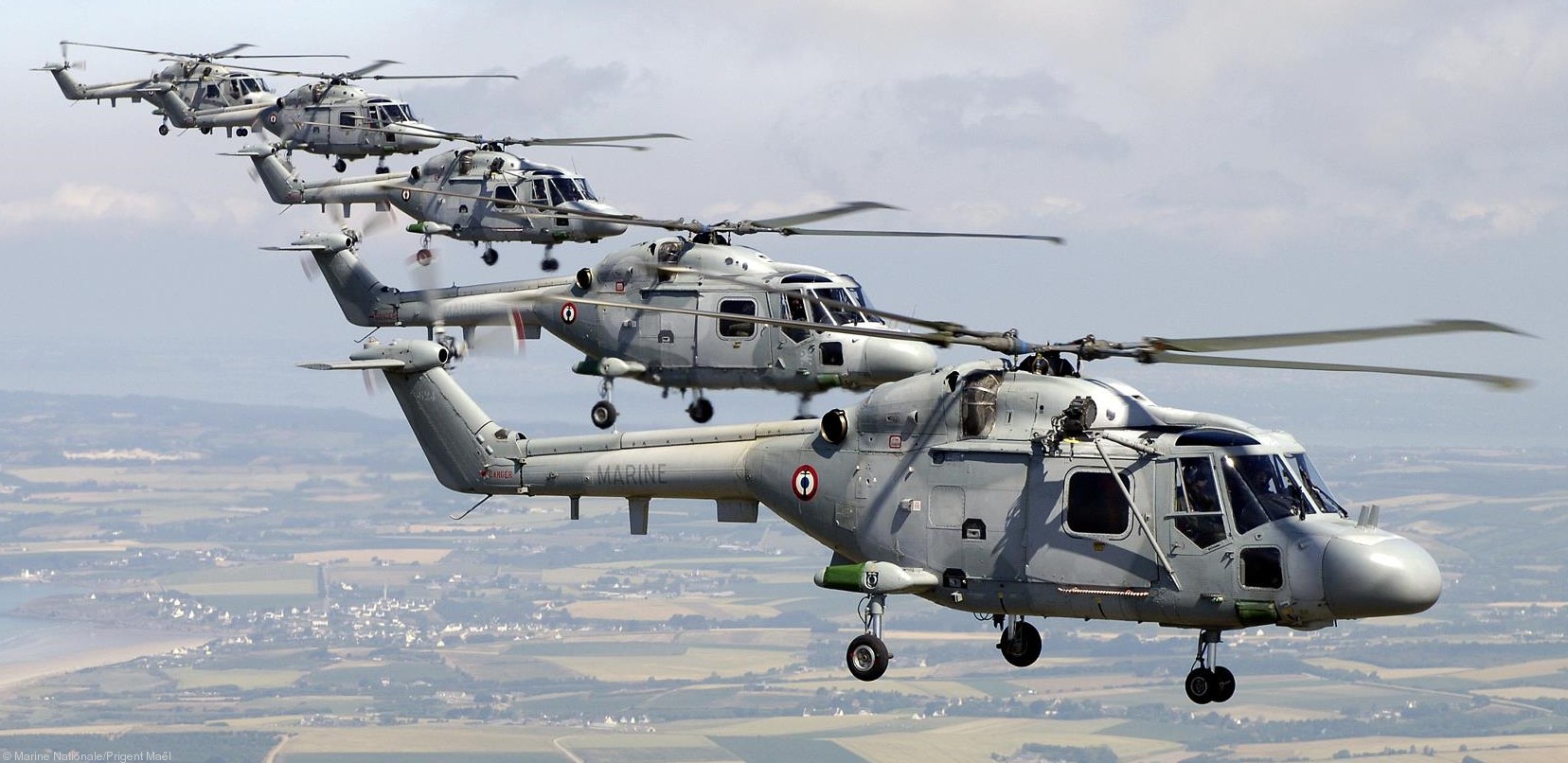- Yes, don’t care how
- Yes, as a researchable vehicle
- Yes, as a premium/event/squadron vehicle
- No
Hi there, in this suggestion we’ll be looking at the earliest French naval Lynx, The Lynx Mk.2.
Lynx in the characteristic blue and white camouflage, unique to the Mk.2 variant (and changed from 1984 onwards).
The story of this helicopter starts way back in 1967, with an agreement between the UK and France to harmonize their helicopter fleets for easy interoperability. This agreement led to both armies procuring the French SA 330 Puma and SA 341/2 Gazelle as well as the UK Lynx. The final cooperation on the Lynx project was mostly to be found in production however, as the entire design was done by the UK firm Westland. Said production was split 70/30 between UK and France with Eurocopter France taking up the smaller 30% share of production. The Lynx (albeit in prototype form) would first fly in 1971 and various versions and upgrades have taken to the sky ever since. The vehicle would make its service debut for France in 1979 in the Mk.2 or HAS.2 Form (HAS stands for hélicoptère anti-sous-marin or helicopter anti-submarine), this version is almost identical to the HAS.2 in service with the UK, with some minor exceptions that we’ll look at later.
In French service, these aircraft were mainly used for anti-submarine warfare, though they were also capable of doing other missions such as rescue at sea, anti-piracy, … The French version was equipped with the OMERA ORB31W radar instead of the Seaspray found on the UK version. They were also equipped with the DUAV-4 dipping sonar for submarine detection. Of course, the vehicle was also capable of carrying armament alongside this detection equipment, in the case of the French Lynx Mk.2, there were 3 main options. The first one was a loadout consisting of up to 2 US-made Mk.46 torpedoes, these would be carried on either side of the fuselage. Later on, in the service life of the helicopter, it was also outfitted with the French-Italian MU90 torpedo. This new torpedo was longer than the Mk.46 ones, which resulted in a risk of the torpedo’s parachute getting caught in the tail rotor. As a result, only one MU90 torpedo could be carried, on the right side of the helicopter, away from the tail rotor. Besides torpedoes, and more importantly for in-game purposes, the helicopter was capable of carrying up to 4 AS.12 missiles. These were in fact a heavier version of the well-known SS.11 missile. Having an 8km range and a 28kg warhead. Guidance and targeting of the missile were done with the SFIM gyro-stabilized telescope used by the aircraft commander in the left seat. Throughout the Lynx’s service life, this missile would become increasingly outdated and eventually be used for the last time in service in 1991, during the Persian Gulf war. Attempts were never made to replace the missile, leaving the helicopter with only torpedoes in its last 30 years of service.
A French Lynx firing an AS.12 missile.
France eventually operated 26 Mk.2 models as well as 14 of the later Mk.4 version that I’ll cover in another post. The Mk.2 served in the 31F and 34F air naval squadrons with which they saw combat in Gulf war of 1990. The helicopters were also used for anti-terrorism missions in a variety of countries as well as a bunch of other deployments. The Mk.2s of the 31F would be replaced by 14 Mk.4s from 1984 onwards, while the Mk.2s of the 34F were not. The vehicle would remain in French service until 2020 with the final 5 units finally being retired. France had made fairly little effort over time to upgrade its helicopters. A small modernization effort was made in 2015 which resulted in the integration of a GPS, a long-range low-frequency radio, an encrypted L11 data link, and an AIS identification system for ships. This lack of large-scale modernization led to them becoming rather outdated. 50+ years of service also weighed heavily on the airframes which eventually required an increasingly large amount of maintenance to keep airborne. All these reasons combined led to France choosing to retire them and replace them with newer models such as the NH90 helicopter.
General Characteristics:
- Crew: 2-3
- Length: 13.3m including tail-rotor
- Height: 3.7m including tail-rotor
- Width: 2.94m excluding rotor
- Powerplant: HAS 2: 2x Rolls-Royce Gem 2 - up to 900 shp (671 kW) at MCR, combined 1800 shp (1342 kW).
- Maximum take-off weight: 4425kg.
- Maximum speed: 296 km/h
- Flares/Chaff: Up to 2x 16 flares in the Alkan Saphir B zéro.
Armament:
- 2x Mk46 torpedo
- 1x MU90 torpedo
- 4x AS12 ATGMs.
In-game:
I see the Lynx as a researchable part of a future aéronavale helicopter branch. The vehicle had a long and eventful life with the French navy so it definitely cannot be left out. The French Lynx does come in 2 variants (we’re only looking at the earlier version here, but the other one is functionally identical bar the engines) meaning that a non-researchable version is not impossible. Which model would be the premium/event/squadron vehicle is something I leave up to the poll and eventually devs to decide. The ability of these helicopters to carry up to 4 potent AS12 missiles makes them a very potent addition against ground targets, as these large missiles will have no problem dealing with tanks and other armored vehicles. This alone should make it an interesting addition to the game and its potential place in a second French helicopter branch only reinforces its claim to be a worthwhile addition.
Sources
Caractéristiques du WG-13 Lynx Mk2/ Mk4 [in french]
http://www.military-today.com/helicopters/westland_lynx.htm
After 40 years, France bids au revoir to the Westland WG13 Lynx - Vertical Mag
Lynx Mk.2/4(FN) Helicopter French Navy Marine Nationale
Fast Cats 50 Years of the Lynx Family
Aérospatiale-Westland WG-13 Lynx








,_France_-_Navy_AN1812424.jpg)




